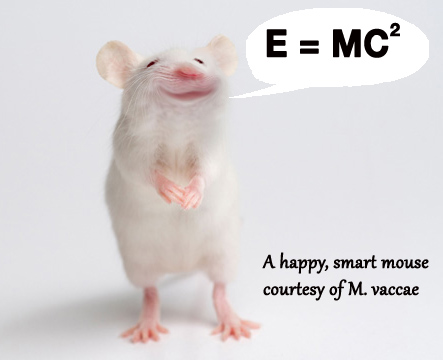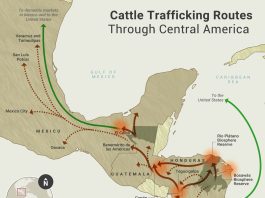I sometimes worry that I might be living in an echo chamber. I constantly talk to people who are interested in grazing and soils and ranching. My mailbox is filled with magazines about modern grazing theory and progressive ranching. I have to set an egg timer each morning to make myself quit reading on-line articles about ruminants and radicals. All of this sometimes causes me to see a world where managed grazing schemes are covering the planet, ending erosion, improving conditions on the ground, and making more money for producers.
But now, at the risk of sounding negative, I must tell you: I have growing doubts that modern, managed grazing theory is having much effect on the livestock industry.
This past spring my wife and I attended a grazing conference in Pendleton, Oregon. “Managing for Resilience” promised to be just the sort of out-on-the-fringe agricultural love-fest that I look for. The speakers were a pretty radical bunch, and the topics included things like riparian management, climate change, animal behavior, and a bunch more whacky ideas. Plus, the conference was put together by some folks from Holistic Management International, a fringe ag group if there ever was one.
One of the headline speakers was giving a talk on the intimate ecological relationships between ruminants, soils, grass and humans. He was telling about the changes in his life and his ranch when he switched from a conventional set-stocking program to a managed grazing system. He spoke about changes in the landscape, stocking rate, and cash flow since he began time-based grazing. Near the end of his story, he asked for a show of hands:
“How many people here are already doing some kind of managed grazing program at home?”
 Out of over one hundred people in attendance, only a dozen raised their hand. I was absolutely shocked, and I think the speaker was too. Here’s the thing: we’re at a conference sponsored by radical ag, targeting progressive producers, but only 10% of the attendees were practicing managed grazing. The rest? Un-managed grazing, I guess.
Out of over one hundred people in attendance, only a dozen raised their hand. I was absolutely shocked, and I think the speaker was too. Here’s the thing: we’re at a conference sponsored by radical ag, targeting progressive producers, but only 10% of the attendees were practicing managed grazing. The rest? Un-managed grazing, I guess.
On our way home we chatted about how and why it could be that so many folks at the convention have not adopted even basic modern grazing practices. Then I started thinking about the ranch country we were driving through, and what kind of grazing practices we could see from the highway. Basically, it looked like set stocking. A few days after arriving back home, we drove around our little valley looking for ranches that were actually managing grazing at a level beyond having just enough cross-fencing to keep the cows out of the hay fields. I hate to say it, but we found not even one. Zero.
All of this brings me back to the title of this piece: Are We There Yet? Has managed grazing saved the world? Ended erosion? Brought prosperity to ranching across America? Nope. And what does that mean for the ranching industry? Well, it probably ain’t good. Here’s some history to think about:

In the 1950s, Andre Voisin did his groundbreaking work, observing the complex relationships between grass and cattle, and modern grazing theory was born. Around the same time, Aldo Leopold brought forth his ideas on land ethics and ecological thinking; pretty radical and heady stuff. Over the next twenty years, Stan Parsons and Allan Savory refined these ideas and brought managed grazing to the commercial ranching world. Since then, there have been many modest improvements in grazing technology and efficiency, but truly, the heavy lifting was done fifty or more years back. And the result? Not much, I’m afraid. At least not in my neighborhood.
If we’re not there yet, when will we get there? Truthfully, I don’t think we will. Not the big “we” at least. Here’s what I mean:
Based on what I have observed, I do not believe that the American ranching industry in general has the desire or ability to accept or adopt managed grazing as a foundational piece of its business plan or lifestyle. Modern, progressive, ecologically-based grazing theory has not substantially changed the base of the American ranching industry. The emotional resistance to change is too great. The revolution has failed, so far.
BUT NOW FOR THE GOOD NEWS!
While most ranchers continue to graze their grasslands in much the same way as their grandfathers did, the few ranchers that have adopted managed grazing would seem to have a tremendous competitive advantage over their poor-grazing neighbors. If we accept the often-repeated statement that managed grazing can increase grass production by 100% (a modest estimate, in my opinion), then good graziers should easily be able to out-bid their neighbors for rents, leases, and purchases.
 So, the reward for adopting modern grazing practices may be that progressive ranchers simply get to stay on the land, have successful businesses and thriving families, even as some of their neighbors slip toward economic failure.
So, the reward for adopting modern grazing practices may be that progressive ranchers simply get to stay on the land, have successful businesses and thriving families, even as some of their neighbors slip toward economic failure.
Going forward, I believe that most of the people who will adopt modern grazing will by young or new ranchers. Change is just too hard for everyone else. It appears that economic attrition will gradually reduce the number of ranches that do not participate in managed grazing, and those retiring ranchers will be gradually replaced by young ranchers that adopt the economic advantages of managed grazing. I think that the grazing revolution will be slow and painful. And I think it will take another 100 years.
Now, go forth and do good. Good grazing.





Same Here Chip and John. NRCS pays something around half of the cost of putting in fences, watering systems, interseeding to improve pastures, brush management and many other things that benefit ranches to increase the speed of adoption.
I do not understand why ranchers don’t want to double profit by increasing biomass to benefit cattle, wildlife, ecosystem services such as clean runoff and much more.
I DO NOT want this to become a regulatory issue like confinements. Here’s the rub. Every civilization that has lost its topsoil ceased to exist almost immediately. Farmers have the biggest burden but ranchers need to do our part too.
John is correct on the slow adoption to managed grazing. Unfortunately, I have no solution other than to just keep plugging away, one producer at a time. We’re up against human nature, which to date, no one has figured out.
Comments are closed.